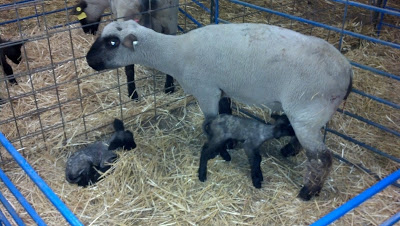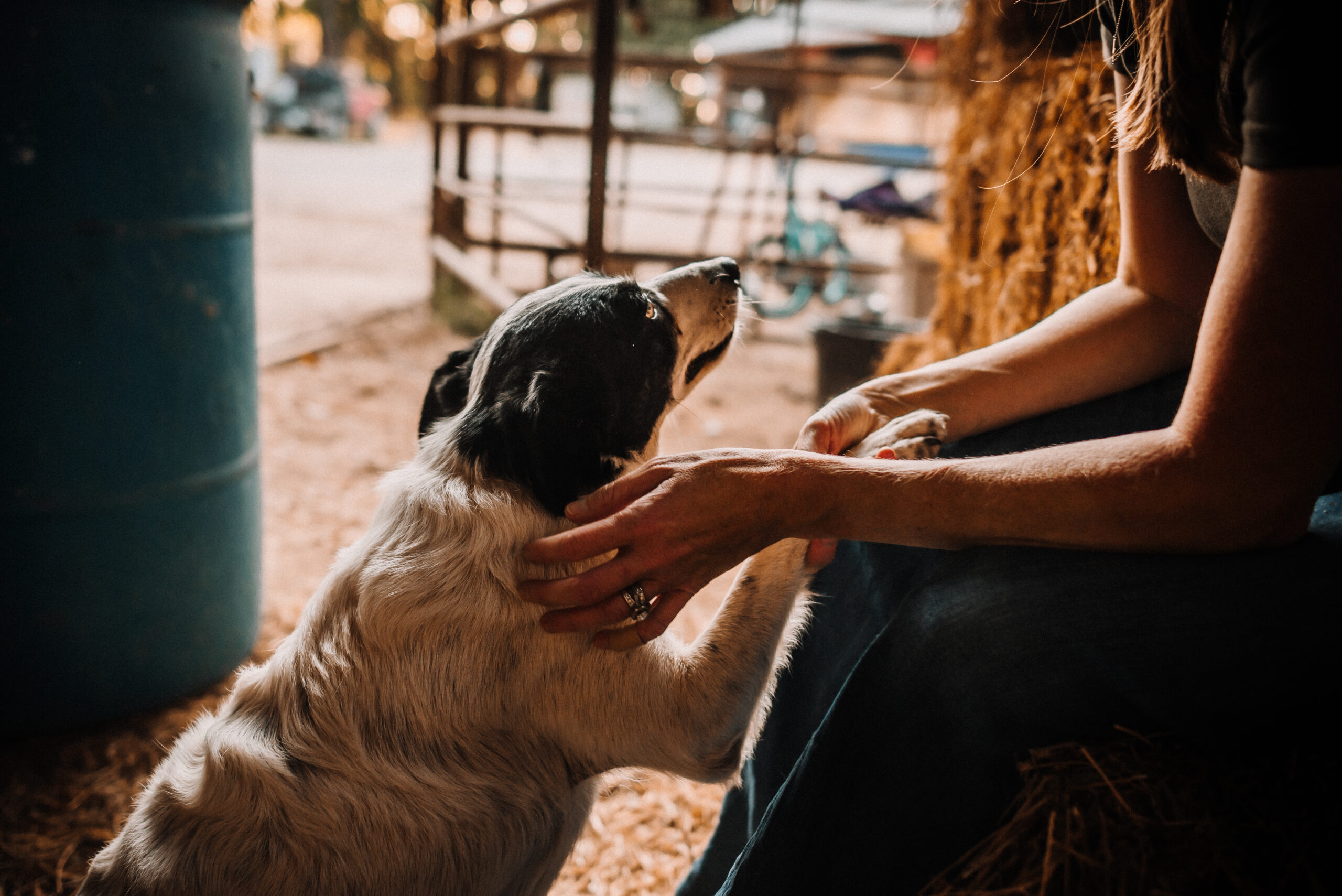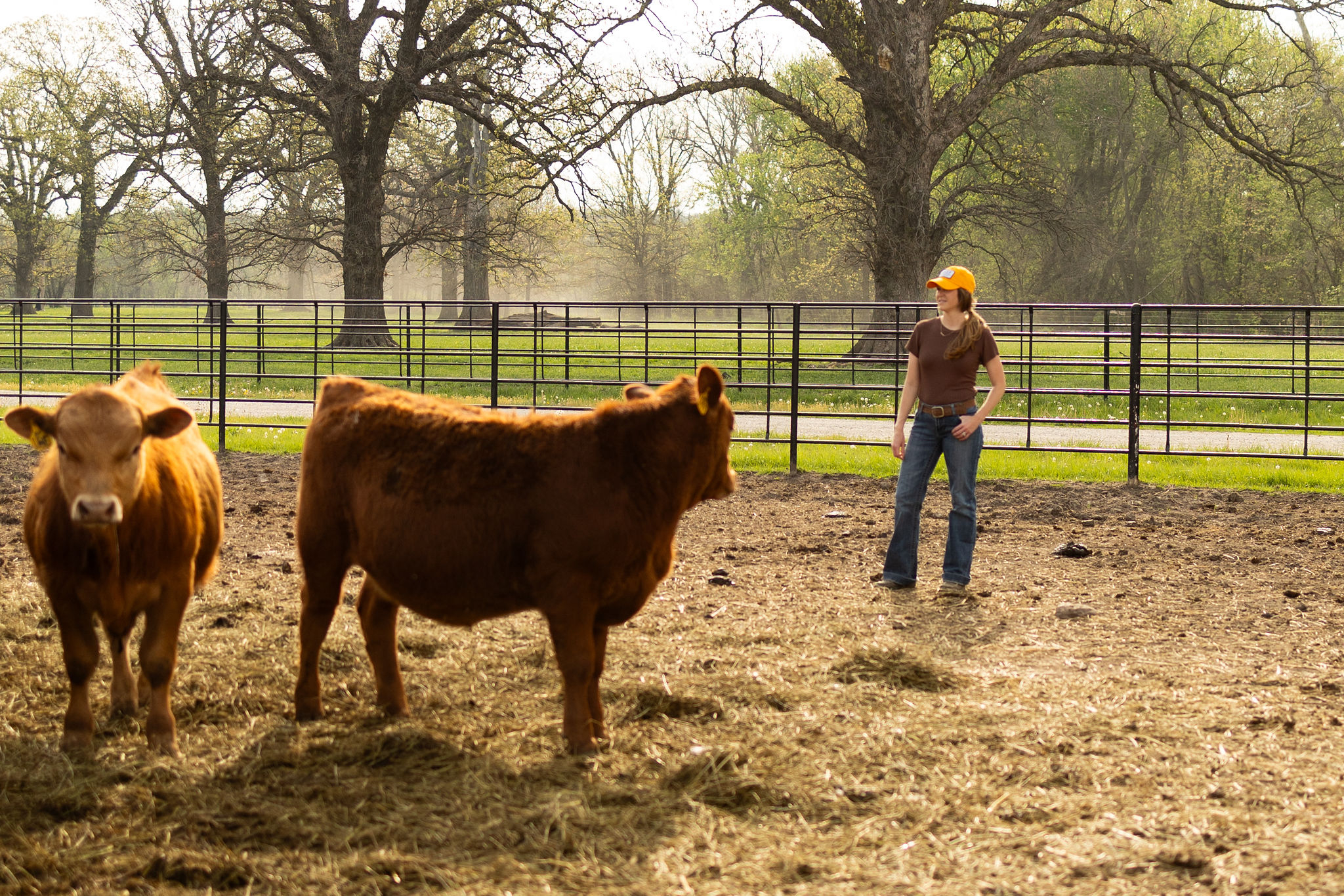For those of you who are unfamiliar with AgChat, it’s a weekly
conversation held on Twitter in which anyone can ask questions revolving
around a predetermined topic. The topics change every week and the
participants change often too – all are welcome to engage and
communicate. Tomorrow night, be sure to search #agchat around 7 pm CST and
join in on the convo!
Now that we’re all on the same page, I must admit that very rarely is there a topic on AgChat in which I have enough expertise to positively contribute. Soil conservation, generational planning, herd management – these things don’t play a role in my life yet. They will in the future, but for now it’s me, the Ninja and a few select domesticated animals that rock out at the FroBuzz Ranchero.
However, AgChat on January 22 was right up my alley. The topic was animal welfare and since I have a M.S. in animal behavior, well-being and health, I consider myself relatively knowledgeable on the topic. But, insert a wedding anniversary and a KSU vs KU basketball game and participating in AgChat was made impossible. Shucks.
My solution is to answer all the questions from the 22nd in this blog post – there were about 15 questions and I’m going to answer them here to the best of my ability and in my opinion (I”ll even try to stick to 140 characters per ‘tweet’). I would love to have you all chime in and contribute your own thoughts and ideas as well!
Q1 – Please tell us about farm and ranch efforts to care for animals in the frigid temps much of the country is experiencing.
A — Increase bedding in shelters, make sure that adequate shelter is provided and increase forage intake to increase body heat. #animalwelfare
Q2 – To farmers & ag peeps, how many nonfarm folks have you had convo with regarding farming methods in last three months?
A — Approx five. Was at a bach party and topic of grass-fed vs grain-fed beef came up. Made sure everyone knew that all #beef is raised humanely
Q3 – How has the livestock industry improved animal welfare over the past decade.
A – Better handling facilities in the race, more efficient and safer
ways of stunning. Less stressful handling has been developed i.e.
quieter
Q4 – What are some of your best practices for speaking with opposing groups about animal welfare? Do’s and Don’ts?
A – Don’t preach. Do be honest. Don’t get defensive. Do find common ground and work from there. Don’t attack opposition. Verbally or otherwise
Q5 – Animal welfare is something that can be hard to explain. How would you describe it?
A – The overall wellbeing of an animal. Physiological responses, behavior patterns & health status in one collective term. VERY hard to measure.
Q6 – What are the public’s biggest concerns when it comes to animal welfare?
A – Industrial farming, antibiotics and slaughter plants. No question about it.
Q7 -What is the perceived value of of certifications such as Animal Welfare Approved & Certified Humane?
A – Cert is valuable but issue is if people will pay for it. Many see labeling and feel good abt purchase, even if they don’t know what it means
Q8 – How can we encourage veterinarians to be more engaged in talking about animal welfare?
A – My initial thought is that they are so busy on office and farm calls they probably don’t have time to chat.
A – But on 2nd thought, talking to small animal vets who don’t have a lot of large animal background could help in the long run.
Q9 – How much value do producers actually put on the results of animal welfare research?
**This was my question, so I’ll post my answer and few other answers that were provided**
A (mine) – depends if they ‘approve’ of the investigator/company/institution that funded the research. Everyone plays politics, unfortunately.
A – (from farmerhaley🙂 Q9 – A LOT! The methods in which farmers use to care for their animals today all evolved out of available research. #agchat
Q11 – Why do farmers and ranchers spend so much time, $$ and effort to keep animals healthy?
A – Because it’s the right thing to do and farmers and ranchers have souls like everyone else.
A – Also, healthier animals are more productive and yield more. This means more food for a hungry world.
Q12 – How are animal welfare and antibiotic usage in livestock related.
A – Both are about responsibility at their very core. And both also contribute to a stronger, healthier and more productive animal.
Q13 – Let’s help each other. Who are the animal welfare experts you recommend learning more about or from?
A – Well, I am one so first I try to come up with an answer myself. But I’ve worked with Temple Grandin on projects and learned a lot from her.
A – Bud Williams is also an animal handling pioneer and has some great methods.
Q14 – How can animal agriculture be more proactive in welfare?
A – Allow more tours of slaughter plants and handling facilities. Public
is afraid of unknown. Make them familiar & they’ll be more accepting
Q15 – This year, I will personally do ____ to foster convo regarding animal welfare.
A – I will do a better job of posting more animal welfare related posts that are easy to comprehend and can connect with consumers better.
** I think this post is a good work on my answer for number 15**
So those are my answers – if you want to see what the rest of the Twitterverse said regarding animal welfare, you can check out the archives.
Anyone want to add anything? Discuss methods, my answers, your opinions? Any non-ag folks out there with questions about animal handling or processing? I went to school to answer questions just like this and have worked, done trials and seen different methods in lots of different settings and would love to chat with you! Feel free to ask me any questions regarding animal behavior or welfare and I’ll do my absolute best to answer them!
Until next time,
~ Buzzard ~





